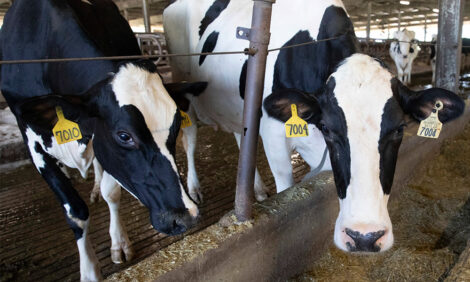



Resistance to Antimicrobials Unchanged
EU - Based on data collected from EU Member States for 2010, a report by the European Food Safety Authority (EFSA) and the European Centre for Disease Prevention and Control (ECDC), shows that resistance to several antimicrobials was commonly detected in zoonotic bacteria such as Salmonella and Campylobacter which are the main causes of reported food-borne infections in the EU.This is the second joint EU report on antimicrobial resistance in zoonotic bacteria affecting humans, animals and food. The report makes an important contribution to current work being carried out at EU-level to fight antimicrobial resistance.
EFSA and ECDC are among the key EU actors participating in a conference to discuss joint actions in combating antimicrobial resistance organised on 14-15 March by the Danish Presidency of the Council of the European Union.
The report on antimicrobial resistance in zoonotic bacteria shows that a high proportion of Campylobacter in humans is resistant to the critically important antimicrobial ciprofloxacin whereas low resistance was recorded for another critically important antimicrobial, erythromycin.
Campylobacteriosis is the most frequently reported zoonotic infection in humans in the EU with over 200,000 reported cases in 2010. High resistance is also recorded for commonly used antimicrobials such as ampicillin and tetracyclines. In animals and food, a very high proportion of Campylobacter is resistant to ciprofloxacin, particularly in chicken but also in pigs and cattle.
In humans, a high proportion of Salmonella, which accounted for almost 100,000 reported human cases of salmonellosis in 2010, is resistant to common antimicrobials but resistance to critically important antimicrobials for treating humans is relatively low. In animals and food, high levels of resistance in Salmonella were reported for commonly used antimicrobials as well as for ciprofloxacin in poultry.
Resistance in indicator E. coli in poultry was high to the critically important antimicrobial ciprofloxacin while in indicator enterococci in animals high resistance was recorded to another important antibiotic, erythromycin.
The report also includes information on the occurrence of Meticillin-resistant Staphylococcus aureus (MRSA) in animals and food from 11 EU Member States and one EFTA country. MRSA was detected in a number of different animal species, including pigs, poultry, cattle, dogs and horses as well as in some food of animal origin.
“Zoonotic diseases are important public health threats in the EU and resistance of zoonotic bacteria to antimicrobials used to treat these illnesses is an increasing concern both at the European level and globally. EFSA recognised this early on in its establishment and has been collecting important data and reporting on antimicrobial resistance trends in animals and food since 2004.
"In the framework of the European Commission’s Action Plan against Antimicrobial Resistance, EFSA will further strengthen its efforts in this field and cooperation with key partners such as ECDC and the European Medicines Agency,” said EFSA’s Executive Director Catherine Geslain-Lanéelle.
ECDC’s Director Marc Sprenger added: “Campylobacteriosis is the most frequently reported zoonotic infection in humans and the high resistance of Campylobacter to several antimicrobials, including ciprofloxacin, is of increasing concern at EU-level.
"ECDC has long been aware of the threat posed by antimicrobial resistance, which is why we have been collecting surveillance data and co-ordinating the European Antibiotic Awareness day. This new report is another crucial step forward. With harmonised surveillance of human and animal data we can act to prevent its further spread in humans.
"ECDC will continue strengthening its links with all key stakeholders including EFSA to provide scientific support to risk managers in order to efficiently tackle antimicrobial resistance from a one-health perspective.”
Further Reading
| - | You can view the full report by clicking here. |
TheCattleSite News Desk


